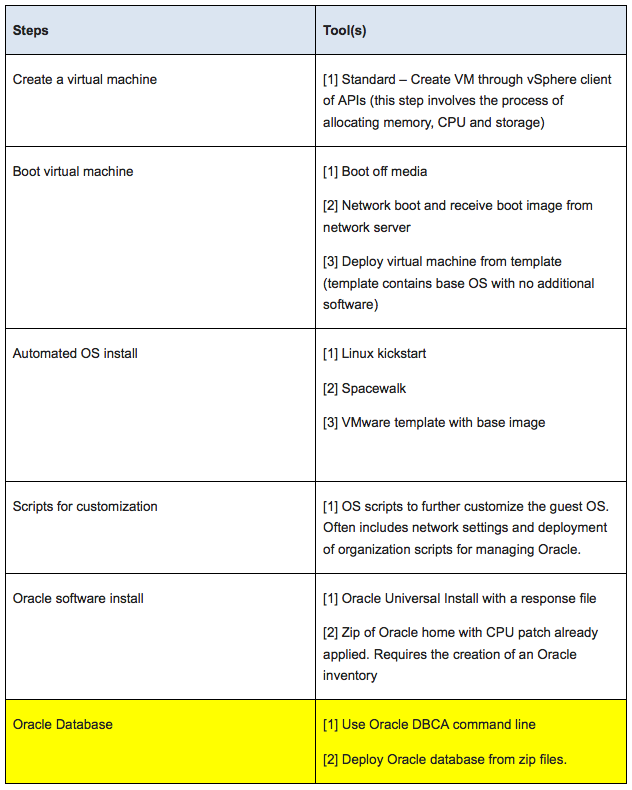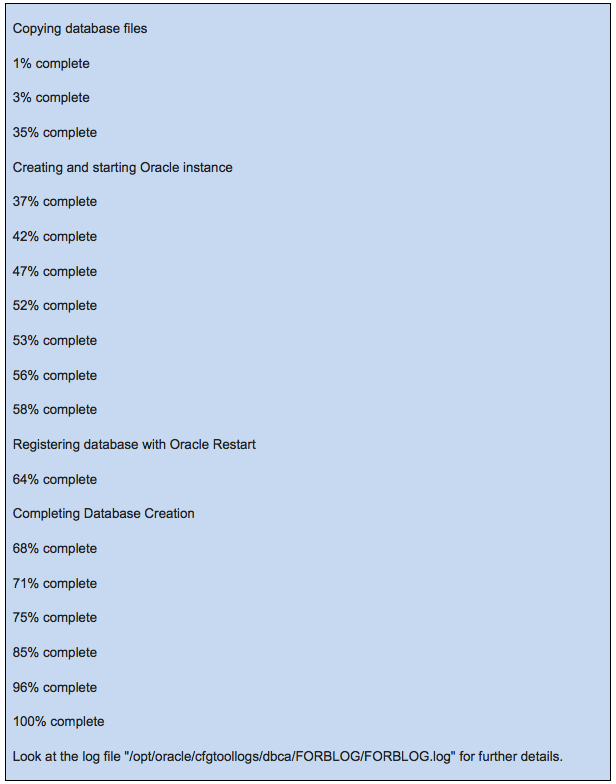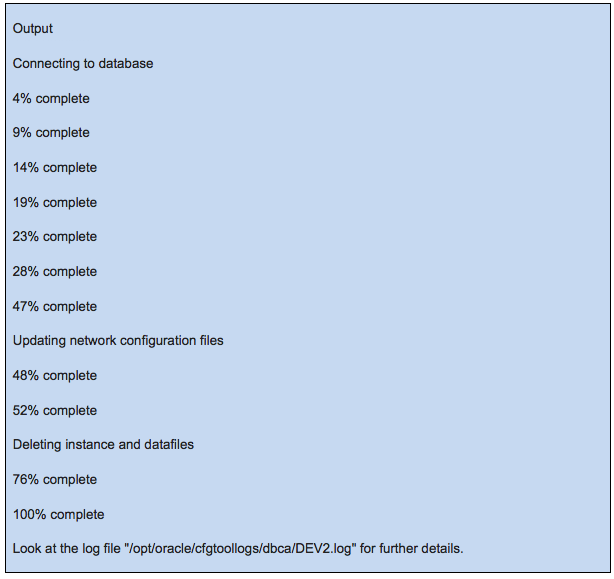Jim Hannan (@HoBHannan), Principal Architect
In my previous post I discussed tools to automate deployments for virtualized Oracle workloads. I outlined some of the current industry methods and their tools. In this blog post I will take a deeper look at one of those tools, Oracle’s DBCA (Database Configuration Assistant). I cannot advocate for DBCA being the perfect solution for every company, but I think majority of IT teams will find it very well suited for their deployments. Before jumping into DBCA, we should first quickly revisit the table from the last blog post. The table below outlines the opportunities for automation. Each step has various methods available to it. In this blog we are targeting the final step, automated deployment of the Oracle database after the virtual machine and software has been deployed.
Table 1 – Oracle Automated Deployment and Tools
Most DBAs are familiar with DBCA and the GUI wizard. Probably less familiar is DBCA’s ability to run silently from the command line. The command line options really lend themselves to automation. You can create a database template or a catalog of templates. In the following example I have created the template SAND-forblog.dbc. This is stored with the other default templates. After creating and selecting the configuration you can than override the setting by using DBCA command line options. An example of overriding a parameter is changing the character set or datafile location. From the command line you can type “dbca –help” to get a full list of options. I have listed some of the key options in the table below. Remember this command line options can override settings defined in the template, very flexible.
Creating the database:
Output of the database creation:
You can delete a database with the command:
And output of the delete command:
I thought it would be worth mentioning that customers that have successfully implemented automation typically have matured their processes first by building standards. This reminds me of software development. First, build the flow chart (standard process), and then look for automation opportunities.
If you have any questions about DBCA automation or previous topics I can be reached on twitter @HoBHannan.











